by Olivia Ladanyi // June 23, 2023
Berlin’s Project Space Festival makes the bold claim that “the only legitimate institution is a community of spaces,” which, so far, its seventh edition has done a persuasive job of demonstrating. Taking the gallery space outside of its conventional context and placing it into apartments, bedrooms, outdoor swimming pools, ex-car dealerships and power plants, the month-long festival has declared a decentralised community of spaces and enabled new models of action.
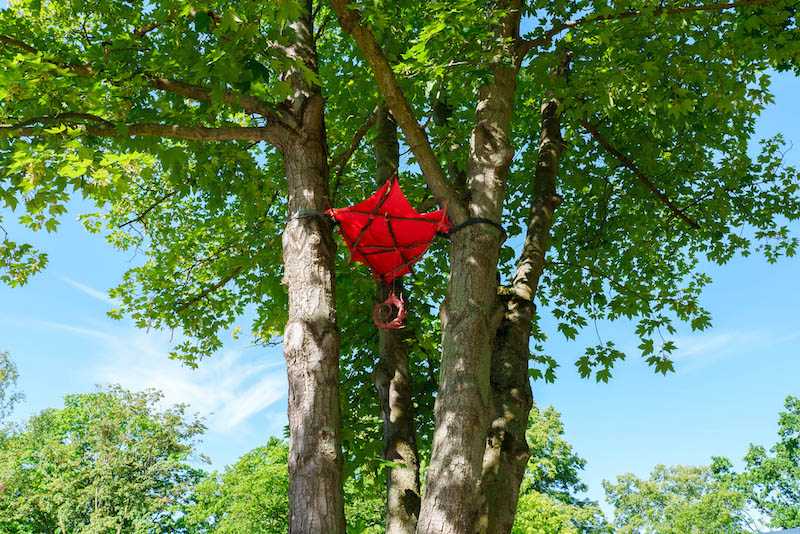
Zhao Chong-Jin: ‘eddy the Body,’ 2023 at TROPEZ // Photo by Ink Agop
Art space TROPEZ organised one of the programme’s first events, displaying nine artists’ work at Sommerbad Humboldtain, accompanied by meditative musical performances and frozen daiquiris. The site-specific sculptures and installations, dotted around the public pool’s green space, peer out from the trees, while others hang from the sky. Rather than taking centre stage, they form the backdrop to the pool’s usual busy life. The artists invited to participate in ‘BELIEVE’ developed or adapted works in response to this unusual context, engaging with the broader audience amidst the busy open-air space. Visitors can play Sahej Rahel’s video game ‘Shrota’ while they wait, be greeted by ‘The Scarecrow’ on their walk from the entrance to the kiosk, sit in a marble butt print, and gaze up at Dardan Zhegrova’s large colourful parrot or Ghita Skali’s ‘officially fictional’ flag as they sunbathe.
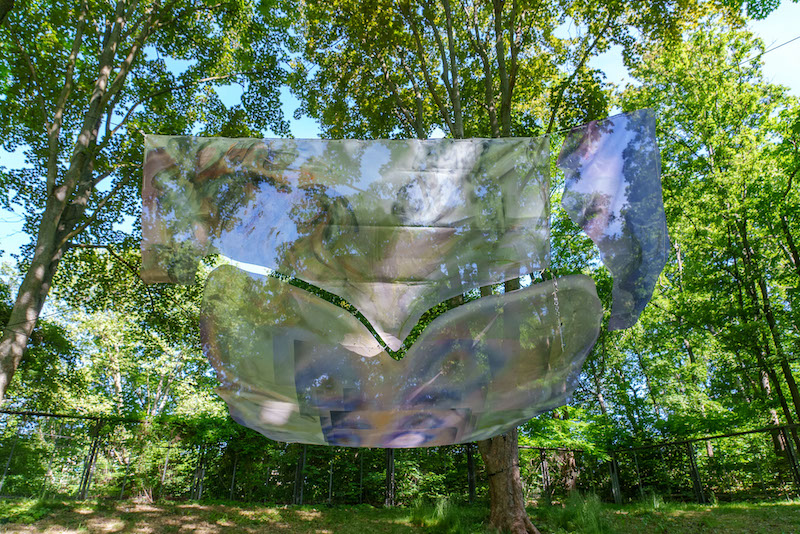
Christina Krys Hubers: ‘S-e-e-d,’ 2023 at TROPEZ // Photo by Ink Agop
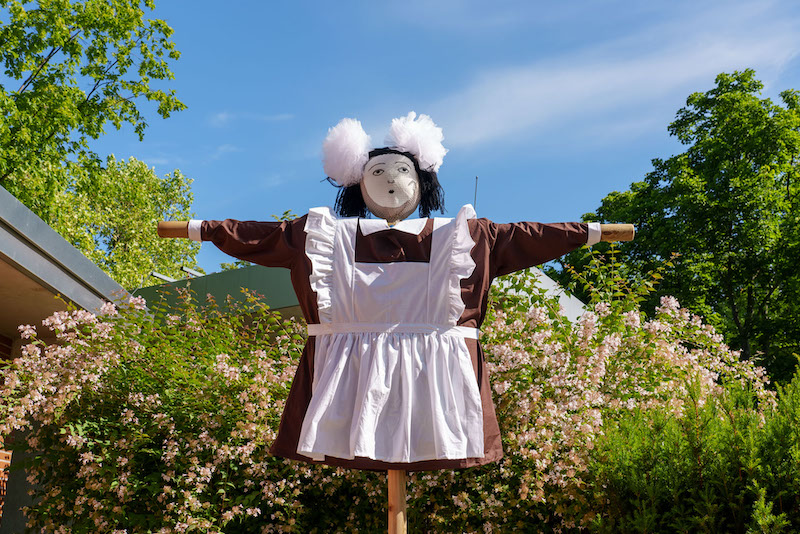
Aziza Shadenova: ‘The Scarecrow,’ 2023 at TROPEZ // Photo by Ink Agop
Pool-goers have to seek out or happen upon the artworks, lending them an element of mystery and subtly encouraging visitors to engage, as opposed to forcing it down their throats. And, in return, the pool-visitors-cum-audience, intentionally or otherwise, enter into a experiential dialogue with the local and international artists’ work in an uncomplicated way. This dynamic lends itself to the show’s themes: mysticism and ideologies, asking what we believe in today and dealing with everyday belief systems. A programme of events—including performances, readings and concerts—will continue throughout the summer, always in conjunction with the pool’s usual opening hours.
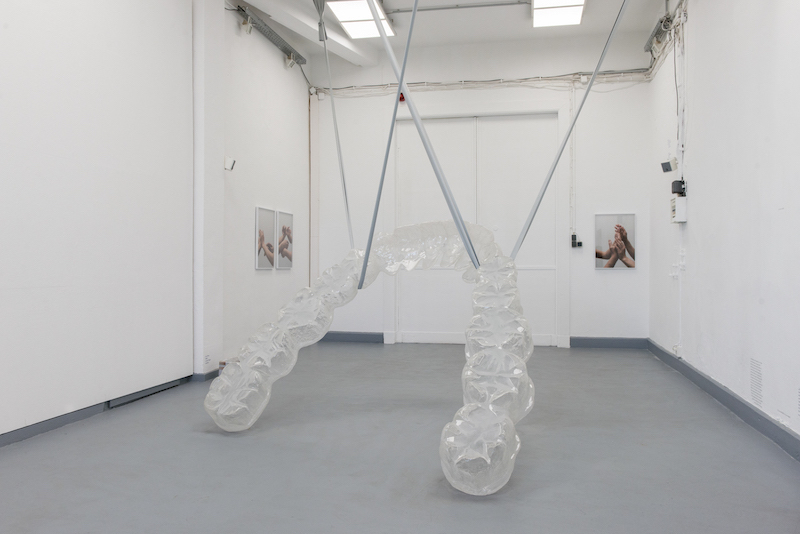
Dana Lorenz: ‘Die Hände mit den Füßen fassen,’ 2023 at alpha nova & galerie futura // Photo by Paula G. Vidal
Day seven of the program was delivered at Medium P, a scaled-down replica of Frankfurt art space Portikus, in a maisonette apartment in Kreuzberg. On the first floor of the four-artist exhibition, a black and white recording from a pole dance studio was projected onto the main wall. Here, the past, present, and future overlap. The dancer swinging slowly, seductively around the pole served as a reminder that this wasn’t just a house party, an easily forgettable fact as smokers leaked out onto the balcony of the intimate urban living space. Up the steep wooden stairs, found objects are strewn across the attic floor in Bogdan Ablozhnyy’s installation, as Mariia Andreeva’s projectors flicker and flash images onto the wall. ‘Trouble’ evokes ghosts in darkened spaces, where images appear and disappear again like scraps of memory.
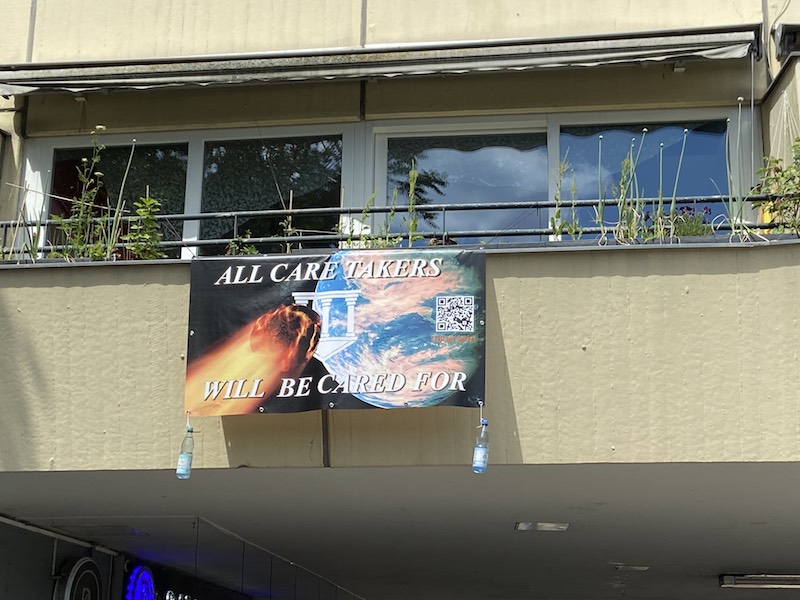
Mehringplatz20 // Courtesy of Magdalena Jadwiga Härtelova
On June 13th, Cassie Thornton presented ‘White Hole: A Mythical Celestial Body’ at Mehringplatz 20, a gallery space located in a bedroom. The performance, which marked the exhibition opening, consisted of a reading of an article written by the artist alongside sounds by the White Noise Choir. The stream of thought, read aloud by various people, expressed the anxieties of living in the “Flat White Dimension”: a physical and intellectual place where you suspect the things that bring you the most pleasure are to the detriment of humanity as a whole. The white noise, made by members of the audience when they saw fit, acted to block out this communal feeling of powerlessness.
From inside the intimate living space, the audience’s participation in the performance created a sense of coming together, guiding each other through the anxiety that we feel about passively witnessing suffering while waiting for a global catastrophe to occur. The exhibition consists of audio files to be listened to in each of the apartment’s rooms, giving context to the anticapitalist sculptures and installations that populate the space, hanging from the ceilings and spreading across the glass window, where we can see the U-Bahn rattle past on its overground tracks.
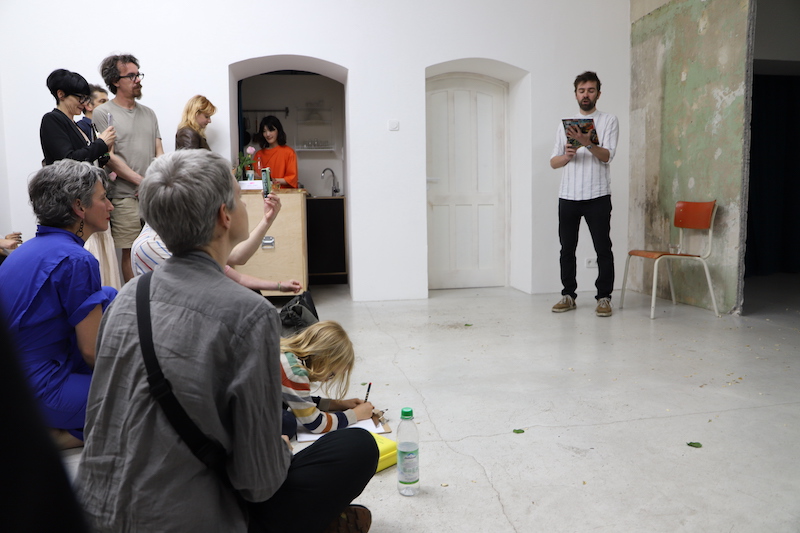
Presentation of Metamorphosis fourth edition on Kino Rinia at Wirwir as part of Project Space Festival 23 // Photo by Shtatëmbëdhjetë
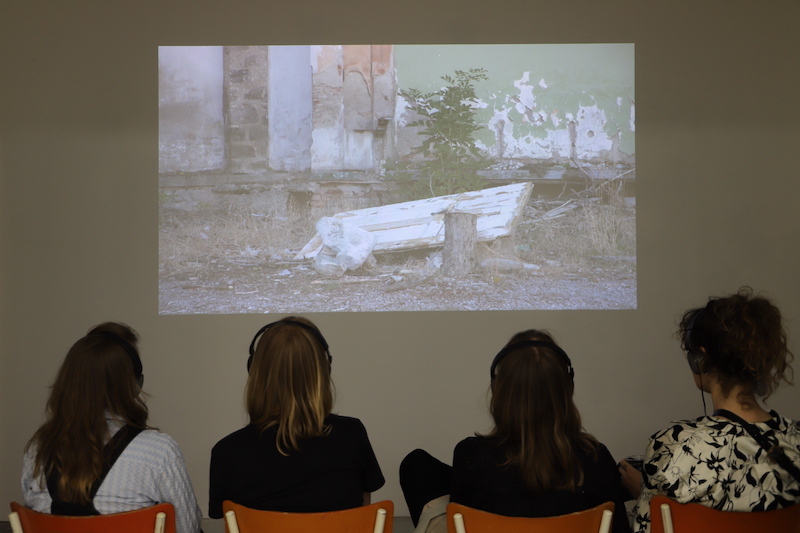
Presentation of Metamorphosis fourth edition on Kino Rinia at Wirwir as part of Project Space Festival 23 // Photo by Shtatëmbëdhjetë
Halfway through the festival programme, Neukölln space WIRWIR presented ‘Metamorphosis’ by Kosovo’s Project Space 17, which investigates the use of public spaces and their benefit to the community. The event comprised performances of three readings, while a film about Prishtina’s first modern cinema—a building of great cultural value on the verge of privatisation and likely to be repurposed, but ultimately saved by the project’s artistic intervention—played in the background. The accompanying spoken words echoed hauntingly around the space, exploring collective memory, identity and displacement.
The festival’s project spaces—and the events they are given a 24-hour window to present—deliver a tangible sense of art being made in real-time. With performances, readings, installations and screenings, festival-goers are given the opportunity to be active viewers rather than passive observers. With each day presenting a different event, the programme’s fleeting nature lends each of June’s events a precious quality. Nevertheless, many of the participating spaces use the festival to kick off their exhibition programme, so even if you missed the opening you could still catch the show. In addition to creating visibility for Berlin’s divergent curatorial programmes, the festival model nudges visitors to consider the value of alternative, non-institutional, artist and community-led art spaces, shifting perspective away from the idea of cultural spaces as isolated or institutional entities.
Festival Info
Project Space Festival
Festival: June 1–30, 2023
projectspacefestival.com
Various Venues




















